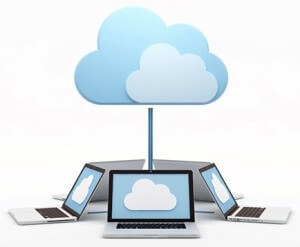Virtual Desktop – VMware View or Citrix Xen, you decide….
Virtual desktop is a term used with respect to user interfaces, usually within the WIMP paradigm, to describe ways in which the virtual space of a computer’s desktop environment is expanded beyond the physical limits of the screen’s display area through the use of software. This compensates for a limited desktop area and can also be helpful in reducing clutter. There are two major approaches to expanding the virtual area of the screen. Switchable virtual desktops allow the user to make virtual copies of their desktop view-port and switch between them, with open windows existing on single virtual desktops. Another approach is to expand the size of a single virtual screen beyond the size of the physical viewing device. Typically, scrolling/panning a subsection of the virtual desktop into view is used to navigate an oversized virtual desktop.
WORKING CRITERIA of Virtual Desktop
Desktop computing is a huge cost to most companies. Virtual or Cloud Desktop Infrastructure can reduce this cost by 50% while also enhancing employee productivity and keep information secure on any device.
A virtual desktop means that a user’s desktop environment (the icons, wallpaper, windows, folders, toolbars, widgets, etc.) is stored remotely on a server, rather than on a local PC or other client computing device. Desktop virtualization software separates the desktop operating systems, applications and data from the hardware client, storing this “virtual desktop” on a remote server.
The remote server that runs and supports virtual desktops uses software called a hypervisor to create a “virtual machine”. BIOS Go Virtual Desktop simulates the user’s desktop environment and capabilities. In a virtual desktop environment, users access their personal desktop remotely, over the Internet, from any client device. Company data resides on the server – so corporate information is secure. Single sign on makes internal and external applications (like salesforce) one in the same for the end users.
The Virtual Desktop Decision on your behalf
Typical issues non virtualized companies experience can be seen below:
- Spiraling Costs: Managing and Maintaining numerous desktops, desktop configurations and policies from a non-centralized approach is extremely costly, time consuming and difficult to scale.
- Bring ‘Your Own’ devices is expected.
- Increasing Complexity of Desktop and Application Management: Patch management, malware and constant complaints of slow user experience are pain points of the IT department.
- Market agility: IT is not aligned to the businesses.
- Increasing hardware Costs.
- Upgrading to Windows versions is daunting
Go Virtual Desktop is a cloud solution that will help companies achieve the following goals:
- Dramatically reduced costs: Centralizing cloud desktop infrastructure makes it faster, easier and less costly for IT staff to provision, deploy, maintain and monitor desktop images across their entire life cycle.
- Enable users to bring their own device and deliver rich user experience: Anywhere, anytime, any device, regardless of what computer they are using (tablet, laptop, smart-phone, desktop), users can access their desktop, applications and data in a consistent and up-to-date manner.
- Centrally Managing user’s software and operating system not user devices: When an update is required, all users get the update at their next login without any need to alter their individual access devices.
- Achieving regulatory compliance and providing proof of compliance is substantially simplified.
- Response to technical issues is much faster and easier.
- Virtualized solutions are green because they consume significantly less power than traditional IT.



